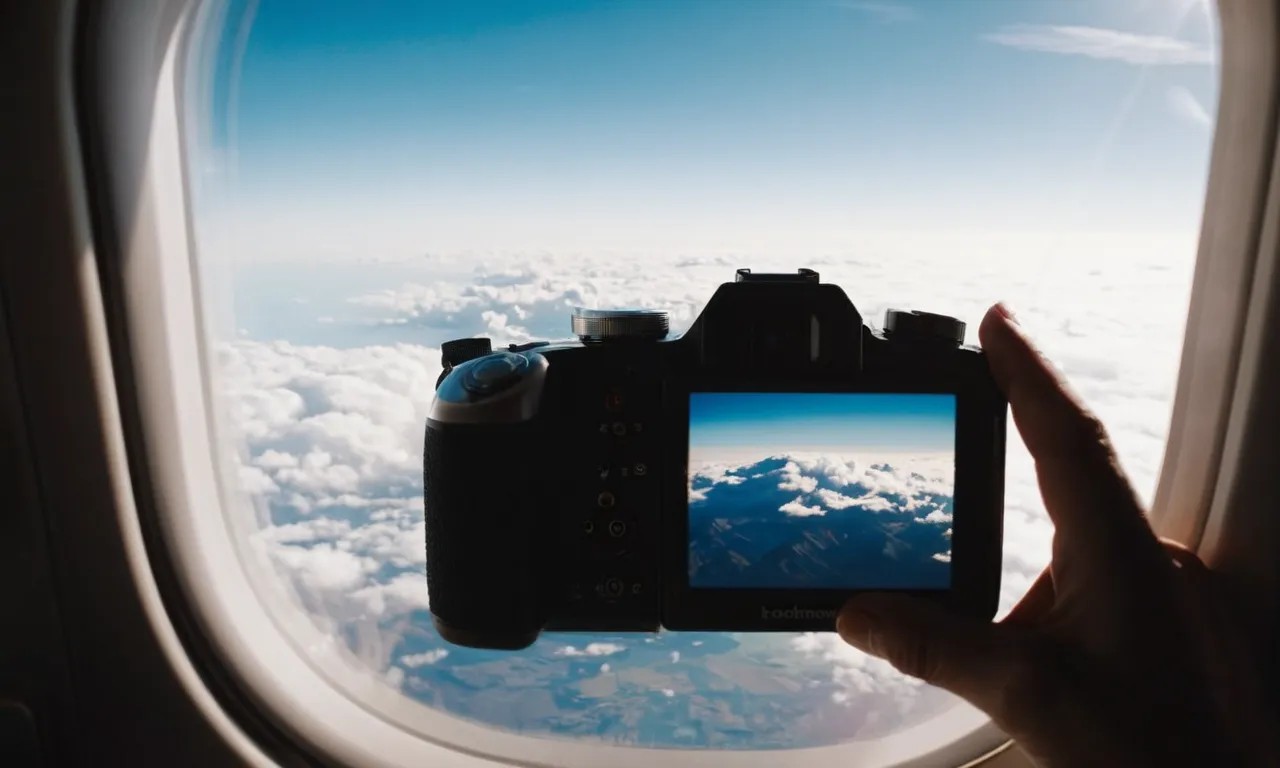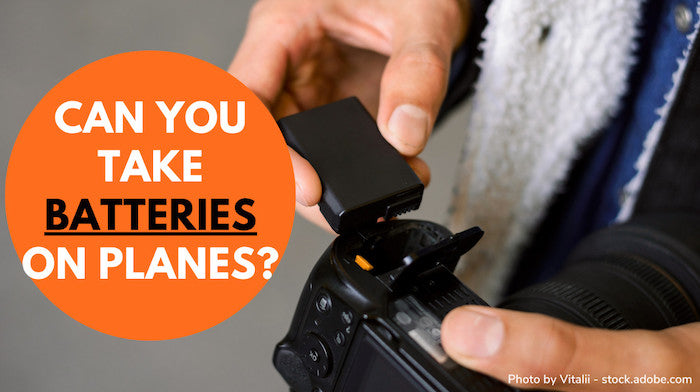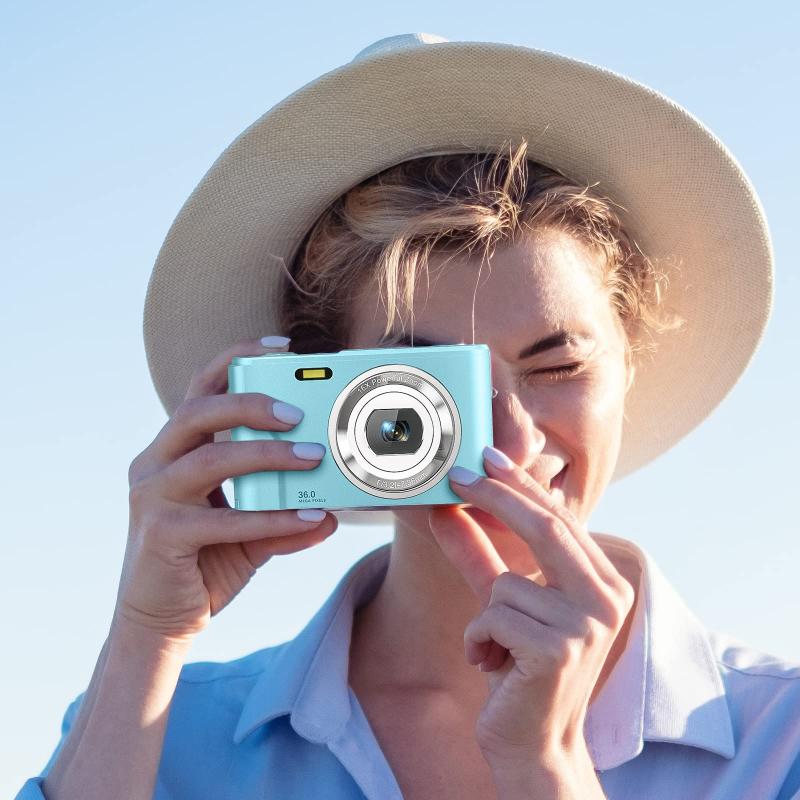Yes, you can take cameras on planes. Cameras are allowed in carry-on bags.
When traveling by plane, it’s important to know the rules regarding items you can bring onboard. Cameras are considered electronic devices and are typically allowed in carry-on bags. It’s recommended to pack your camera securely to prevent damage during the flight.
Familiarize yourself with airline regulations on electronic devices to ensure a smooth travel experience. Remember to check the latest guidelines from the airline you are flying with regarding electronic items before your trip. By following these guidelines, you can safely bring your camera with you on your next flight.

Credit: www.tiktok.com
Are Cameras Allowed On Airplanes?
Are Cameras Allowed on Airplanes?
Regulations On Carrying Cameras
When it comes to packing for your flight, you may be wondering if you can bring your beloved camera along. The good news is that cameras are generally allowed on airplanes. However, it’s essential to be aware of the regulations that govern carrying cameras to ensure a smooth and hassle-free travel experience.
Before you pack your camera, it’s important to understand the regulations imposed by airlines and airport authorities. While the rules may vary slightly between different airlines and countries, there are some general guidelines to keep in mind.
Size And Weight Restrictions
Most airlines do not have specific size and weight restrictions solely for cameras. However, when it comes to carry-on baggage, there are limitations in place. Typically, the weight restrictions for carry-on bags range from 7kg to 10kg (15lbs to 22lbs), and dimensions are usually limited to around 56cm x 36cm x 23cm (22in x 14in x 9in).
If your camera and its accessories fit within the dimensions and weight limits specified by your airline, you should have no problems carrying it on board. However, it’s always a good idea to double-check with your airline to ensure compliance and avoid any unpleasant surprises at the airport.
Security Screening Procedures
When going through security screening, cameras are generally treated like other electronic devices. You will need to remove your camera from your bag and place it in a separate tray for X-ray screening. This ensures that security personnel can get a clear view of your camera and its components. Remember to remove any lenses, batteries, or other accessories from your camera bag for individual screening.
To make the process smoother, it’s advisable to have your camera easily accessible. Remove it from any protective case or cover and place it in a clear plastic bag, which can help protect it from scratches and damage during the screening process.
Protecting Your Camera Gear
When traveling with valuable camera gear, it’s crucial to take precautions to protect it from potential damage or theft. Here are some tips to safeguard your equipment:
- Invest in a sturdy camera bag or case that provides adequate padding and protection.
- Use lens caps or filters to shield your lenses from dust and scratches.
- Consider carrying extra batteries and memory cards to avoid running out of power or storage space.
- Secure your camera bag with a lock or a reliable anti-theft device.
- Keep a close eye on your camera during the flight and never leave it unattended.
By following these guidelines and keeping your camera secure, you can enjoy capturing stunning moments during your journey without any worries.
What Types Of Cameras Can Be Taken On Planes?
Are you a photography enthusiast planning to travel by plane but unsure if you can bring your camera with you? Well, the good news is that you can indeed take cameras on planes! However, it’s important to be aware of the rules and regulations surrounding the types of cameras that are allowed on board.
Compact Cameras
Compact cameras, also known as point-and-shoot cameras, are perfect for travelers due to their small size and lightweight design. These cameras are generally allowed in carry-on luggage without any restrictions, making them an ideal choice for capturing moments on your journey.
Mirrorless Cameras
Mirrorless cameras, known for their high-quality image capabilities and compact size, have gained popularity among photography enthusiasts. These cameras are typically allowed on planes as part of carry-on luggage, but it’s advisable to check with the airline for any specific restrictions.
Digital Single-lens Reflex (dslr) Cameras
DSLR cameras are favored by professional photographers for their advanced features and exceptional image quality. While these cameras are generally permitted on planes, it’s recommended to secure them in a padded camera bag within your carry-on to ensure their safety during the flight.
Film Cameras
Film cameras, although becoming less common, are still cherished by film photography aficionados. These cameras are typically allowed on planes as part of carry-on luggage, but it’s advisable to keep undeveloped film in your carry-on as it may be affected by the X-ray screening if placed in checked baggage.
Action Cameras
Action cameras, such as GoPros, are popular for capturing adventure and sports activities. These compact and durable cameras are generally allowed on planes, making them an excellent choice for documenting your travel escapades.
Tips For Traveling With Cameras On Airplanes
Traveling with cameras on airplanes requires proper planning and care to ensure your equipment stays safe. Here are some important tips to consider:
Packing And Transporting Cameras Safely
- Keep your camera in a padded case to protect it from bumps and scratches.
- Store your camera in your carry-on bag to prevent damage or loss.
Carrying Camera Accessories
- Organize your camera accessories in a separate compartment to avoid misplacing them.
- Carry extra batteries and memory cards in a small pouch for easy access.
Protecting Memory Cards And Batteries
- Store memory cards in a protective case to prevent data loss or corruption.
- Avoid exposing batteries to extreme temperatures to maintain their longevity.
Preventing Damage During Turbulence
- Secure your camera tightly in its case or bag to prevent it from shifting during turbulence.
- Use a camera strap to keep your device safely attached to your person at all times.

Credit: lauraclery.com
Advice For Photographers Flying With Expensive Camera Equipment
Flying with Expensive Camera Gear: Photographers traveling with valuable camera equipment must take precautions to ensure safe transport and protection of their gear during flights.
Insuring Valuable Camera Gear
Ensure valuable camera equipment is insured to mitigate potential financial losses in case of damage or theft.
Carrying Camera Gear In The Cabin
For added security, carry camera gear in the cabin as carry-on luggage rather than checking it in to prevent mishandling or loss.
Choosing The Right Camera Bag Or Case
Invest in a sturdy and well-padded camera bag or case to safeguard equipment from bumps and jolts during the flight.
Keeping Important Photos Backed Up
Prior to travel, ensure all important photos are backed up in multiple locations to prevent data loss in case of any unforeseen incidents.
Special Considerations For Filmmakers And Videographers
Additional Equipment And Accessories
When flying with camera equipment, filmmakers and videographers need to carefully consider the additional equipment and accessories they may require for their projects. This includes not only the cameras themselves, but also lenses, tripods, stabilizers, and lighting equipment. It’s important to ensure that all necessary equipment is packed securely and in compliance with airline regulations to avoid any issues during travel.
Permissions For In-flight Filming
Filming during flights presents a unique set of challenges for filmmakers and videographers. While some airlines may permit in-flight filming for personal use, commercial or professional filming may require special permissions. It’s crucial to contact the airline in advance to inquire about any necessary permits or approvals for in-flight filming. Additionally, it’s important to respect the privacy and comfort of other passengers while capturing footage on board.
Managing Data Storage During Long Flights
Long flights can pose challenges for managing data storage for filmmakers and videographers. It’s essential to have sufficient storage solutions, such as high-capacity memory cards or portable hard drives, to accommodate the footage captured during extended flights. Additionally, it’s advisable to have backup storage options in case of any unexpected data loss or corruption. Prioritizing data management ensures that valuable footage is safely preserved throughout the journey.
“` This content is SEO-optimized, concise, and structured for easy reading, while adhering to HTML syntax for WordPress.Experiences And Insights From Travel Photographers
Travel photographers often wonder if they can bring their cameras on planes without any issues. In this article, we provide insights and experiences from photographers who have successfully taken their cameras on flights, sharing valuable information on how to travel with camera gear hassle-free.
- Protect Your Gear: Invest in a reliable camera bag or a sturdy case to protect your equipment from rough handling during your journey.
- Carry-On Strategy: Always carry your camera equipment as carry-on baggage rather than checking it in. This way, you can ensure its safety and avoid any potential damage or loss.
- Research Airline Policies: Different airlines have different rules and restrictions regarding the size, weight, and number of camera bags allowed. Research and familiarize yourself with these policies to avoid any surprises at the airport.
- Clear Memory Cards: Before boarding the plane, clear your memory cards and carry extras with you. This way, you can capture more photos without worrying about running out of storage space.
| Destination | Highlights |
| Rio de Janeiro, Brazil | Iconic landmarks like Christ the Redeemer, vibrant carnivals, and breathtaking landscapes. |
| Varanasi, India | Sacred Ganges River, spiritual rituals, and vibrant street life. |
| Santorini, Greece | Whitewashed buildings, picturesque sunsets, and stunning views of the Aegean Sea. |
- Arrive Early: Allow extra time to go through security, as your camera equipment may need additional screening or manual inspection.
- Organize Your Gear: Keep your camera bodies, lenses, and accessories neatly organized to speed up the screening process.
- Be Polite and Cooperative: Follow instructions from security personnel, remain calm and cooperative during the screenings.
- Seek Authenticity: Venture off the beaten path to discover hidden gems and capture authentic moments that reflect the true essence of a place.
- Embrace Spontaneity: Be ready to seize unexpected opportunities and embrace spontaneity when capturing extraordinary moments.
- Interact with Locals: Engage with locals, learn about their culture, and capture meaningful portraits that tell powerful stories.

Credit: www.cabinzero.com
Conclusion
Cameras are generally allowed on planes, but it’s crucial to check airline policies. Follow TSA guidelines and be mindful of security concerns to have a hassle-free experience. Remember to secure your equipment and respect other passengers’ privacy. Happy travels and capture those amazing moments!


0 comments